This post may contain affiliate links. Please see our disclosure policy.
Pressure canning crab meat is a fantastic way to preserve this delicious seafood, allowing you to enjoy the sweet, succulent taste of crab year-round. Whether you’re using it for crab cakes, crab bisque, or simply as a snack, home-canned crab is a convenient and delicious addition to your pantry.
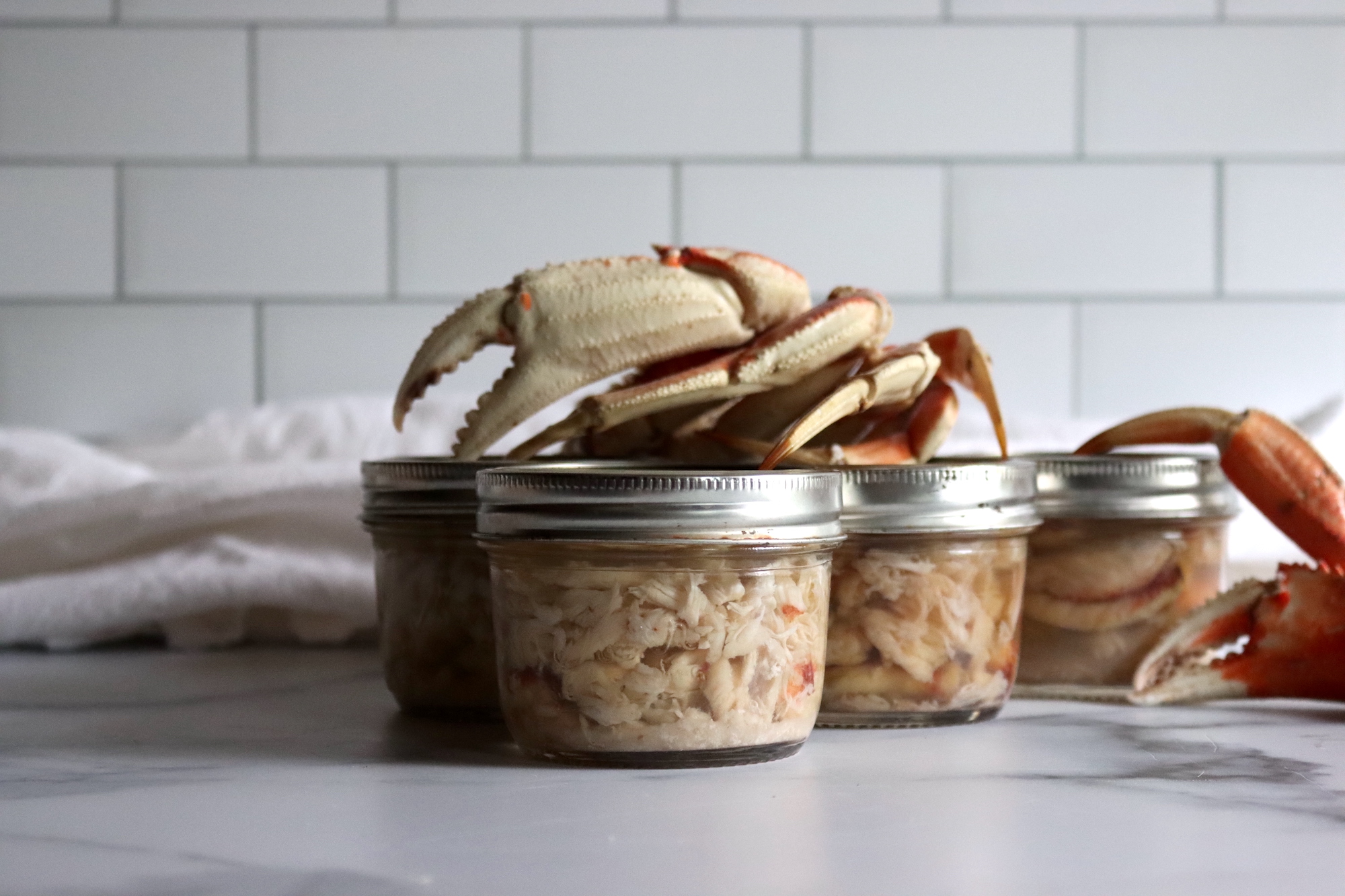
Crab known for its delicate, sweet flavor and tender texture, and it does surprisingly well in canning.
Whether you’ve caught a fresh batch of crabs or bought them on sale at your local market, pressure canning is an excellent way to preserve crab meat for later use. Canning crab allows you to enjoy its unique taste long after the season has passed, and it works wonderfully in homemade crab cakes, or with pasta or salad.
Be aware that pressure canning is the only safe method for canning seafood, and crab cannot be processed in a water bath canner.
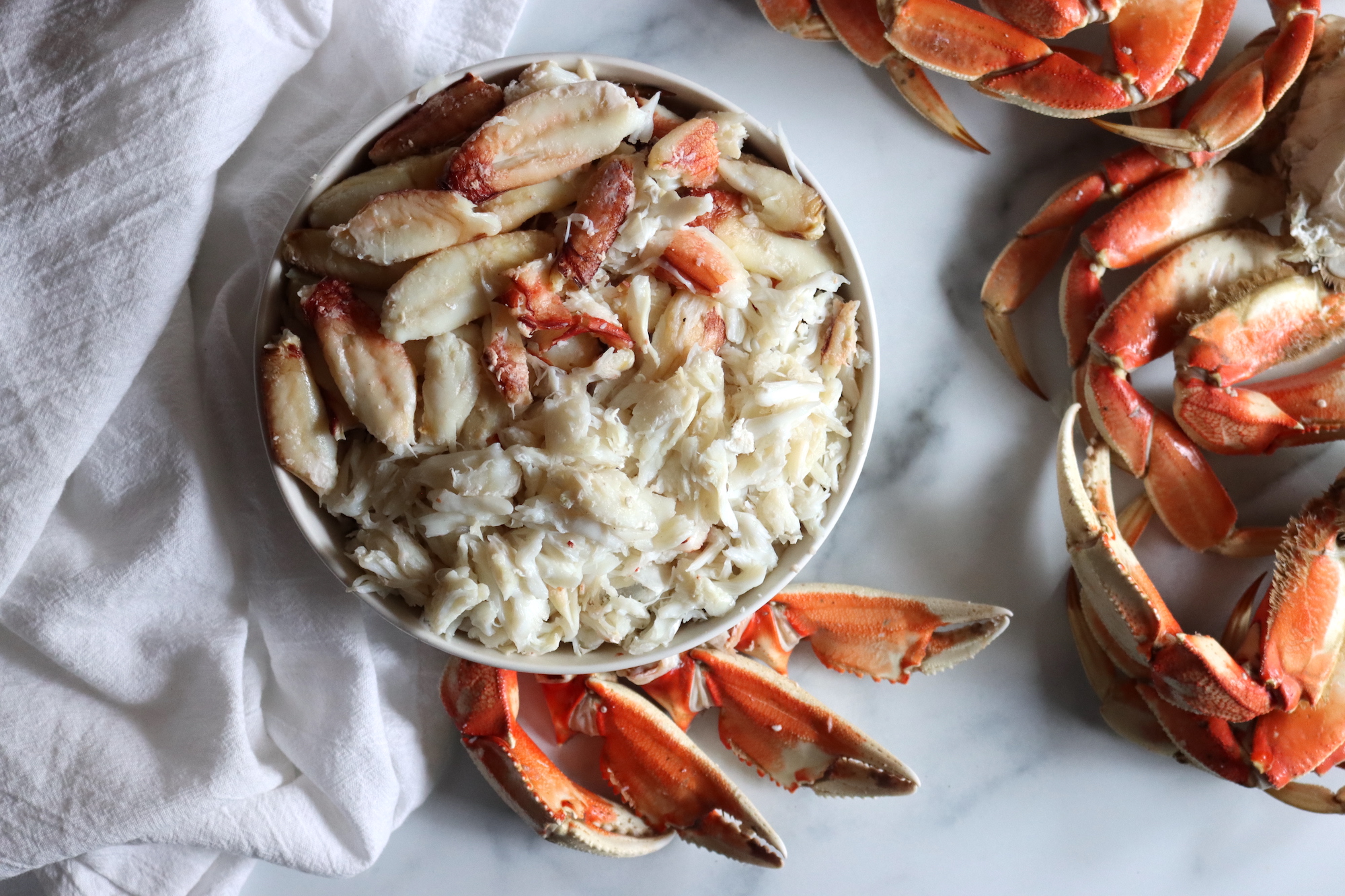
Ingredients for Canning Crab
Canning crab requires a bit more preparation than most canning recipes. The meat goes through several pre-cooking and soaking steps before going into the jars, and this helps ensure quality in the finished home canned goods.
For a batch size of about 4 pints or 8 half pints, you’ll need:
For Cooking the Crabs:
- Live crabs (about 4 medium to large crabs)
- ¼ cup lemon juice
- 2 tablespoons salt (or up to 1 cup, depending on your preference)
- Water (enough to cover the crabs during cooking)
For Soaking the Crab Meat:
- 2 cups lemon juice (or 4 cups white vinegar as an alternative)
- 2 tablespoons salt (or up to 1 cup, based on your taste preferences)
- Cold water (enough to submerge the meat)
For Canning the Crab:
- Citric acid (optional, but highly recommended for best color retention)
- ½ teaspoon of citric acid or 2 tablespoons lemon juice per half-pint jar
- 1 teaspoon of citric acid or 4 tablespoons lemon juice per pint jar
- Hot water (enough to fill the jars while leaving 1 inch of headspace)
These ingredients are crucial for preserving the color, texture, and taste of the crab meat. The lemon juice or citric acid used during the cooking and canning stages plays an essential role in preventing the meat from darkening in the jar.
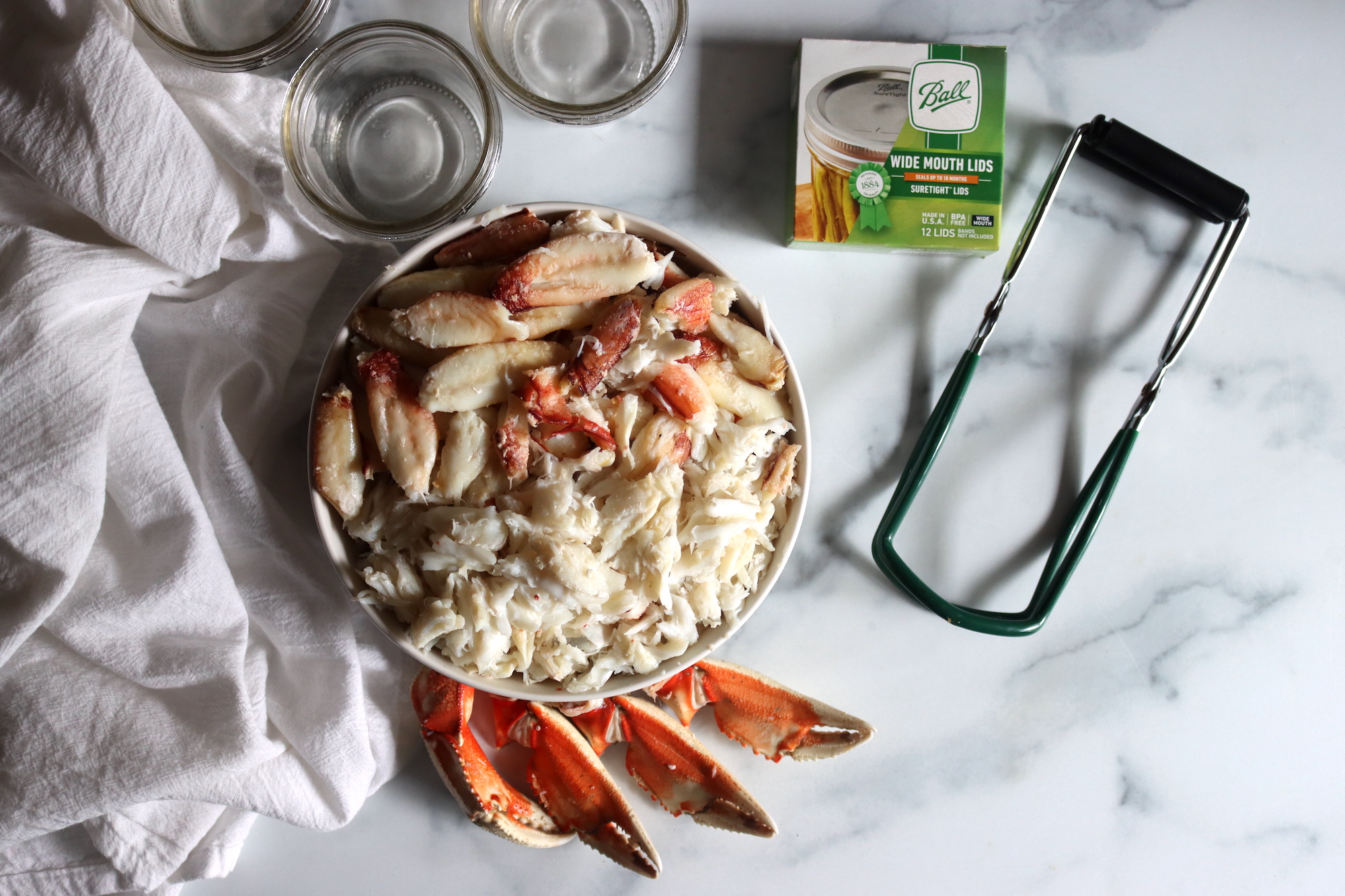
Preparing Crab for Canning
To start canning crab, keep live crabs on ice until you’re ready to process them, and make sure to wash them thoroughly with several changes of cold water.
You can cook the crabs either whole or in sections, but if you bleed them in sections before cooking, it may help prevent darkening of the meat. In a large pot, simmer the crabs for about 20 minutes in water that contains ¼ cup of lemon juice and 2 tablespoons of salt per gallon of water (or up to 1 cup of salt if you’d like).
Once the crabs are cooked, cool them quickly in cold water and then drain. Remove the back shell, and carefully take out the meat from the body and claws.
Next, soak the crab meat for 2 minutes in a solution of cold water, 2 cups of lemon juice (or 4 cups of white vinegar), and 2 tablespoons of salt per gallon (you can add up to 1 cup of salt if desired).
After soaking, drain and gently squeeze out any excess moisture from the meat.
(If you’re buying pre-cooked crab meat in the shell, you can skip these steps, as it’s already been cooked in an acidic solution to prevent browning. Simply strip the meat from the shells and then move on to canning.)
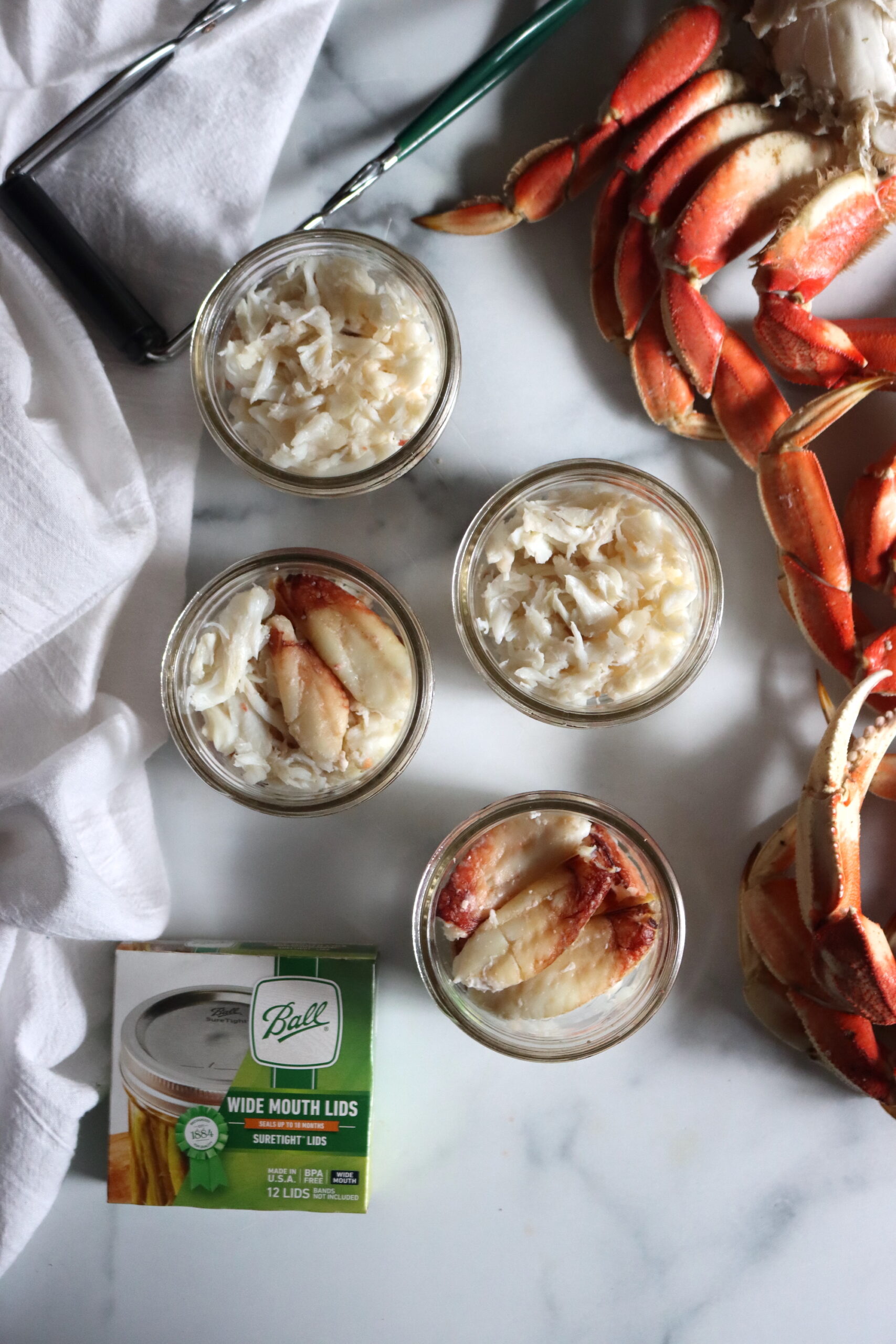
Canning Crab
Once the meat is prepared, it’s time to get the canner ready and pack the meat into jars.
Prepare your pressure canner according to the manufacturer’s instructions. That usually means adding a few inches of water to the bottom and bringing it up to a gentle simmer.
Now, fill your jars—half-pint jars should have about 6 ounces of meat, and pint jars should have 12 ounces—making sure to leave about 1 inch of headspace.
Add citric acid or lemon juice to each jar: ½ teaspoon of citric acid or 2 tablespoons of lemon juice for each half-pint jar, or 1 teaspoon of citric acid or 4 tablespoons of lemon juice for each pint jar.
Fill the jars with hot water, again leaving 1 inch of headspace, and be sure to remove any air bubbles.
Once everything’s in place, wipe the rims of the jars with a paper towel dampened with vinegar to ensure a clean seal, then adjust the lids. Finally, process the jars in a pressure canner.
Canning times are 70 minutes for half pints, and 80 minutes for pints. The times stay the same at higher altitudes, but you do need to adjust pressure if you’re over 1,000 feet in elevation (see below).
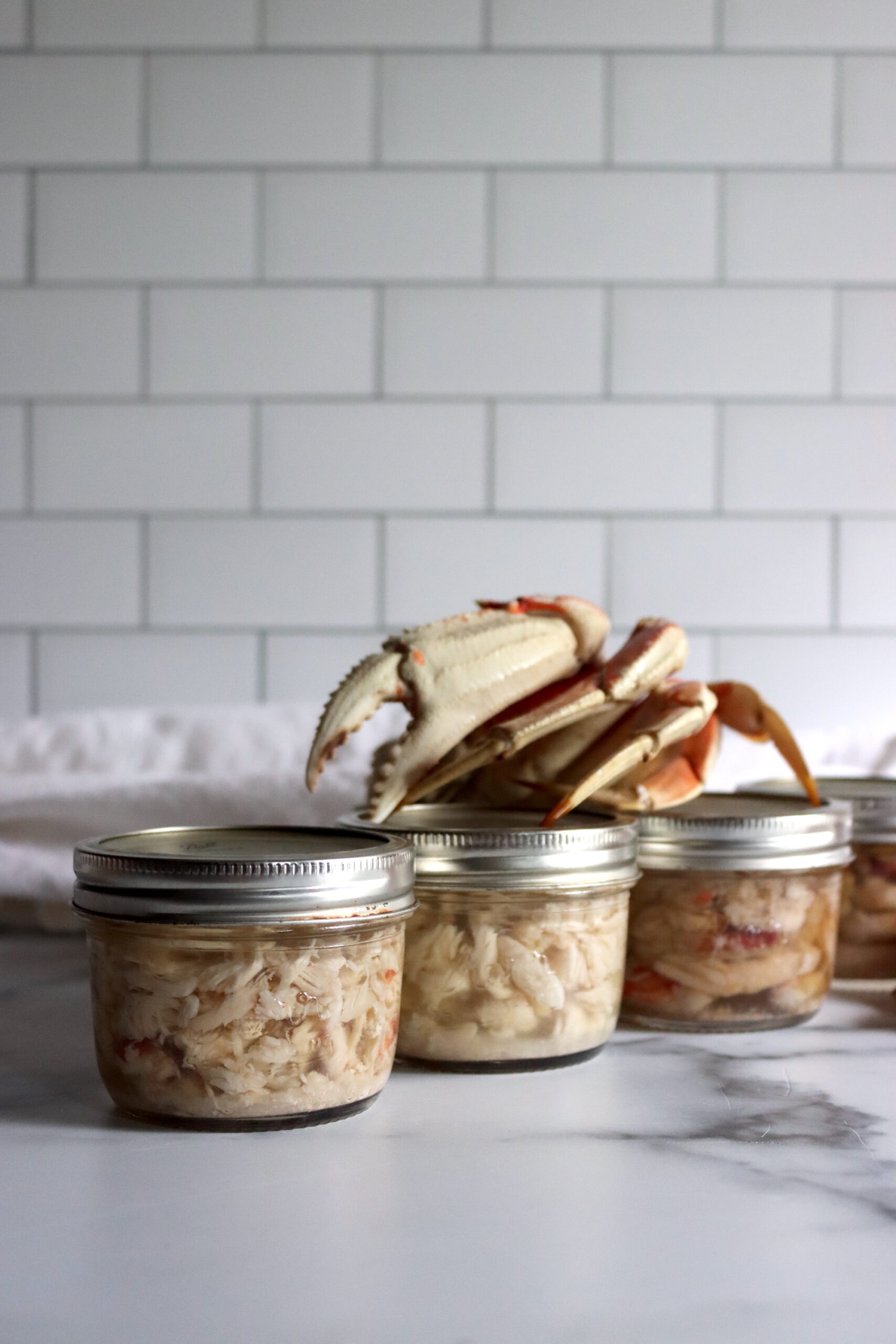
Altitude Adjustments
With pressure canning, the processing times stay the same at higher altitudes, but the pressures change. Here are the altitude adjustments for pressure canning:
For dial gauge pressure canners:
- 0 to 2,000 feet in elevation – 11 lbs pressure
- 2,001 to 4,000 feet in elevation – 12 lbs pressure
- 4,001 to 6,000 feet in elevation – 13 lbs pressure
- 6,001 to 8,000 feet in elevation – 14 lbs pressure
For weighted gauge pressure canners:
- 0 to 1,000 feet in elevation – 10 lbs pressure
- Above 1,000 feet – 15 lbs pressure
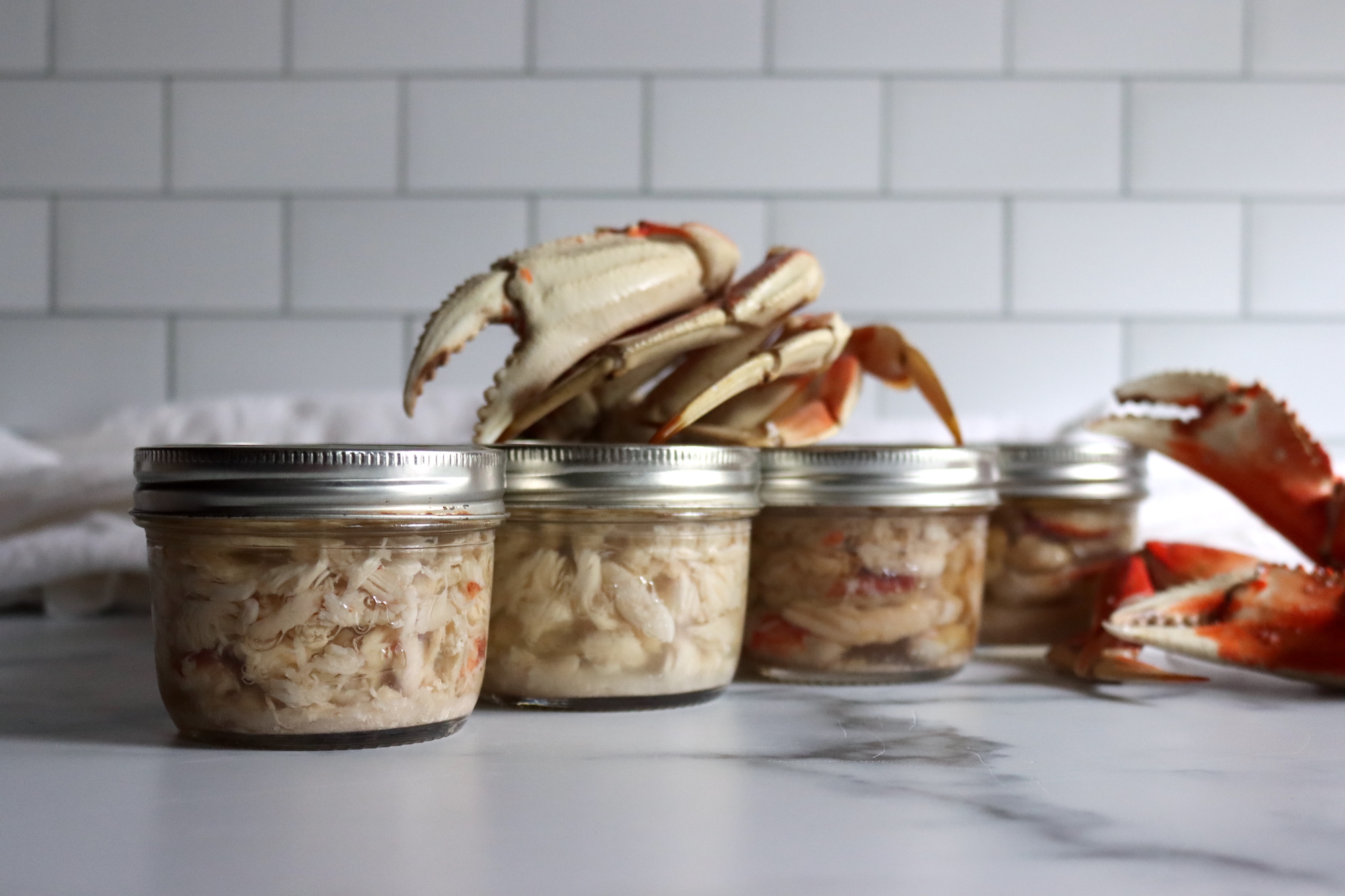
Lemon Juice for Canning Crab
Canned crab might have a slightly acidic flavor, so if you’re sensitive to that, you might prefer freezing it instead. The lemon juice is added for quality, rather than safety, and home canned crab darkens quite a bit in the jar if you don’t add lemon juice.
You can try it if you’d like, but in my experience, it turns a dark brown that’s almost black, and it’s really unappealing.
I actually like a little bit of lemon flavor in my crab, and it goes really well in crab cakes or as a topping for a fresh salad. A pasta with a cream sauce and crab also benefits from a little acidity to brighten the recipe.
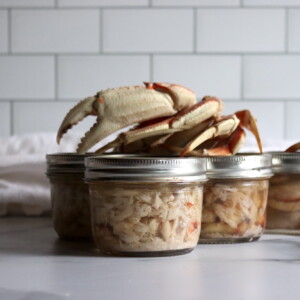
Canning Crab
Ingredients
- Live crabs, about 4 medium to large crabs for 4 pints or 8 half-pints
For Cooking the Crabs:
- ¼ cup lemon juice
- 2 Tbsp salt, or up to 1 cup, depending on your preference
- 1 gallon Water
For Soaking the Crab Meat:
- 2 cups lemon juice, or 4 cups white vinegar
- 2 Tbsp salt, or up to 1 cup, depending on your preference
- 1 gallon Cold water
For Canning the Crab:
- 1 cup Lemon Juice, 1/2 tsp citric acid or 2 Tbsp of lemon juice per half-pint jar, or 1 tsp of citric acid or 4 Tbsp of lemon juice per pint jar
- Hot water, enough to fill the jars while leaving 1 inch of headspace
Instructions
Prepare the Crab:
- Keep live crabs on ice until you’re ready to process them. Wash them thoroughly with several changes of cold water.
- You can cook the crabs whole or in sections. If you choose to cook them in sections, bleeding the crabs first may help prevent darkening of the meat.
Cook the Crabs:
- In a large pot, simmer the crabs for 20 minutes in water containing ¼ cup lemon juice and 2 tablespoons salt per gallon of water (feel free to use up to 1 cup of salt if you prefer).
- After cooking, cool the crabs quickly in cold water, then drain.
Prepare the Meat:
- Remove the back shell of the crabs, and carefully take out the meat from the body and claws.
- Soak the crab meat for 2 minutes in a solution of cold water, 2 cups of lemon juice (or 4 cups of white vinegar), and 2 tablespoons of salt per gallon (up to 1 cup of salt if desired).
- Drain the meat and gently squeeze out any excess moisture.
Prepare the Canner:
- Prepare your pressure canner according to the manufacturer’s instructions. Typically, you’ll need to add a few inches of water to the bottom and bring it to a gentle simmer.
Fill the Jars:
- Fill half-pint jars with about 6 ounces of meat and pint jars with 12 ounces, making sure to leave 1 inch of headspace.
- Add citric acid or lemon juice to each jar. Use ½ teaspoon of citric acid or 2 tablespoons of lemon juice for half-pint jars. Or 1 teaspoon of citric acid or 4 tablespoons of lemon juice for pint jars.
- Fill the jars with hot water, again leaving 1 inch of headspace.
- Remove any air bubbles.
- Wipe the rims of the jars with a paper towel dampened with vinegar to ensure a clean seal, then adjust the lids.
Process the Jars:
- Process the jars in the pressure canner for 70 minutes for half-pints or 80 minutes for pints.
Notes
- For dial gauge pressure canners, adjust the pressure as follows:
- 0-2,000 feet: 11 lbs pressure
- 2,001-4,000 feet: 12 lbs pressure
- 4,001-6,000 feet: 13 lbs pressure
- 6,001-8,000 feet: 14 lbs pressure
- For weighted gauge pressure canners, adjust the pressure:
- 0-1,000 feet: 10 lbs pressure
- Above 1,000 feet: 15 lbs pressure
Nutrition
Nutrition information is automatically calculated, so should only be used as an approximation.
Seafood Canning Recipes
Crab brings gourmet flair to your home-canned pantry!
It’s not the only way to put seafood in a jar, and once you’ve canned crab, try your hand at other seafood canning recipes. Home canned Tuna is a great pantry staple, and home canned salmon is so much better than storebought.
If you want to get fancy, you can even try canning shrimp!
I have so many options on my list of fish canning recipes, including meal in a jar recipes like Nordic Salmon Soup and chowders such as the rich and satisfying Salmon Chowder Base.
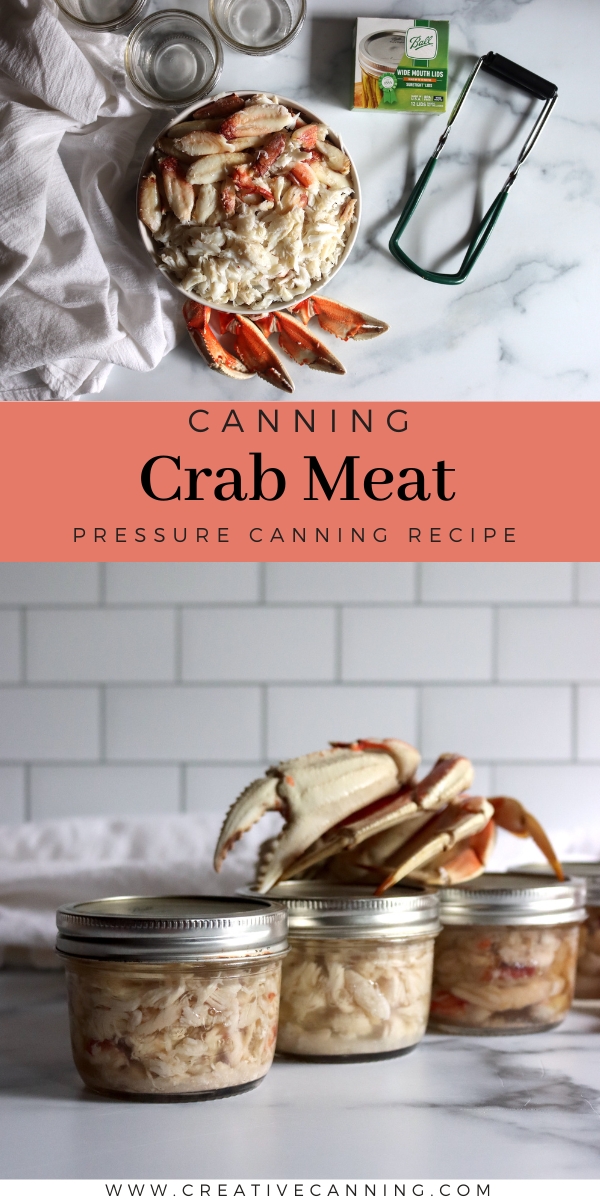
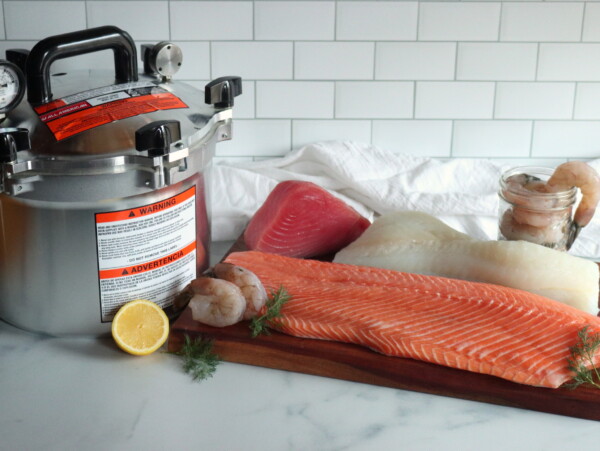
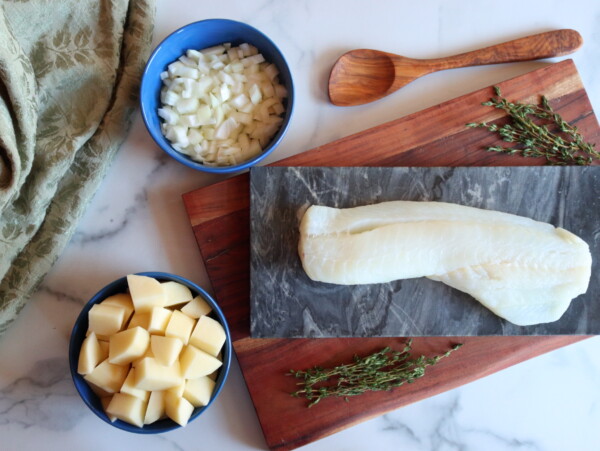
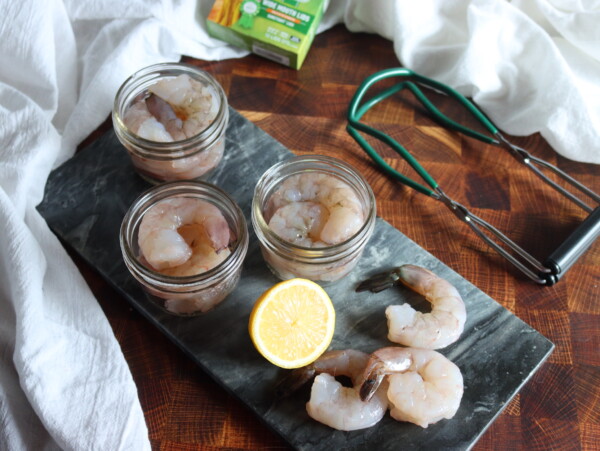
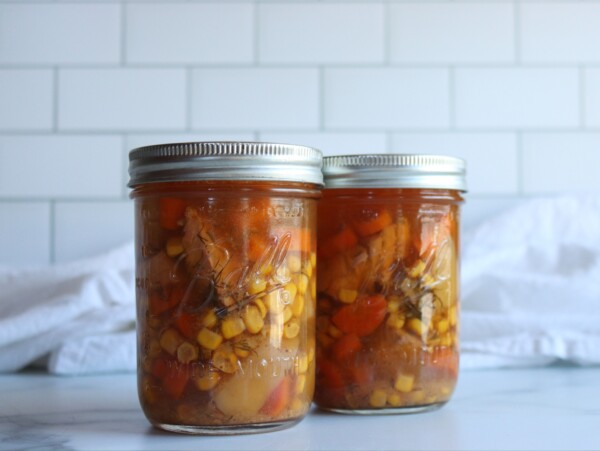
A lot of places online gave all canned seafood mixed reviews, but my family actually really loved this canned crab recipe. It’s honestly just as good as fresh, and it’s perfect right out of the jar. We most often drain the cans and used them to make homemade crab cakes, but we’ve also used it fresh on top of salads or crackers with cream cheese.
Hi Ashley
Would this recipe be a step model for canning lobster? Thank you
There is no tested recipe for canning lobster, at least not in the modern era. It was commonly canned historically when it was “poor people’s food” but since it’s become so expensive, modern testing labs have not re-tested those recipes to make sure they’re up to date for modern safety standards. I have not personally canned lobster.
If I was bound and determined to can lobster, even without a tested recipe, this would be the most sensible recipe to follow. Of course, at your own risk and all that, given there’s no data on the safety here.
Best of luck!